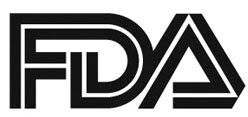FDA Approves Pembrolizumab for Treatment of High-Risk NMIBC
Pembrolizumab is now FDA approved for the treatment of patients with Bacillus Calmette-Guerin–unresponsive, high-risk, non-muscle invasive bladder cancer with carcinoma in situ with or without papillary tumors who are ineligible for or have elected not to undergo cystectomy.

Pembrolizumab (Keytruda) is now FDA approved for the treatment of patients with Bacillus Calmette-Guerin (BCG)unresponsive, high-risk, non-muscle invasive bladder cancer (NMIBC) with carcinoma in situ (CIS) with or without papillary tumors who are ineligible for or have elected not to undergo cystectomy.1
The approval is based on findings from the phase II KEYNOTE-057 trial (NCT02625961), in which the PD-1 inhibitor elicited a complete response (CR) rate of 41% (31%-51%) in 96 patients with high-risk NMIBC with CIS with or without papillary tumors; the median duration of response (DOR) was 16.2 months (0.0+, 30.4+). Additionally, 46% of responding patients experienced a CR lasting ≥12 months.
The approval follows the December 2019 decision by the FDA’s Oncologic Drugs Advisory Committee to vote 9 to 4 supporting the approval of a new drug application (NDA) for pembrolizumab in this patient population.2The panel was voting that the response efficacy data compared with the toxicity findings from the KEYNOTE-057 trial demonstrate a favorable risk/benefit profile for pembrolizumab in this setting. The FDA previously granted a priority review designation, also in December 2019, to the pembrolizumab NDA.
In the multicenter, open-label, single-arm, multicohort, phase II KEYNOTE-057 trial, investigators enrolled 148 patients with high-risk NMIBC, 96 of whom had BCG-unresponsive, high-risk, NMIBC with CIS with or without papillary tumors.
Pembrolizumab was administered at 200 mg every 3 weeks until unacceptable toxicity, persistent or recurrent high-risk NMIBC, or disease progression. Disease was assessed every 12 weeks, and those who did not have disease progression could receive treatment for up to 2 years.
The median age was 73 years (range, 44-92), with most patients (70.6%) ≥65 years. Most patients (83.3%) were male, 67.6% were white, and 73.5% had an ECOG performance status of 0. The median number of prior BCG instillations was 12 (range, 6-45). Patients had CIS with T1 (11.8%), CIS with high-grade Ta (24.5%), or CIS alone (63.7%). More than half of patients (56.9%) had a PD-L1 combined positive score <10, and the reason most patients did not have prior cystectomy was because they refused (95.1%). The baseline high-risk NMIBC disease status was recurrent in 69.6% of patients.
The primary outcome measures were CR, urine cytology, and computed tomography urography imaging, and duration of response. The enrollment cutoff date was April 1, 2018.
Interim data demonstrated a 3-month CR rate of 38.8% in this patient population. Among the 40 patients who achieved a CR at 3 months, 72.5% maintained a CR at a median follow-up of 14 months; the median CR duration had not been reached. A total 80.2% of patients had a CR lasting ≥6 months.
At an updated median follow-up of 21.1 months (range, 4.6-33.4), treatment was ongoing in 11 patients. Eighty-eight patients discontinued pembrolizumab due to persistent disease (n = 40), recurrent disease (n = 33), adverse events (AEs; n = 10), achieved CR (n = 2), physician decision (n = 1), protocol violation (n = 1), and patient withdrawal (n = 1).
Twenty-two of the 42 patients who achieved CR had an ongoing response at the time of data cutoff, and 20 of these patients subsequently experienced recurrent disease. One patient experienced recurrent disease immediately after ≥2 nonevaluable assessments; they discontinued after 12 weeks due to ongoing AEs. Additionally, 1 patient with a locally assessed CR underwent cystectomy, and another was nonevaluable at week 12 but then had a confirmed CR at the start of week 24 with >12 months of durability. No patients developed muscle-invasive or metastatic disease.
Higher CRs were observed in patients who were not white (55.6%) and an ECOG performance status of 1 (51.9%); they were lowest in those who had CIS with high-grade Ta (28.0%).
The safety profile was found to be consistent with AEs that were reported in prior studies of the PD-1 inhibitor. Ninety-nine patients experienced ≥1 AE, and treatment-related AEs (TRAEs) were reported in 65.7% of patients. Grade 3 to 5 AEs, grade 3/4 TRAEs, serious AEs, and serious TRAEs were reported in 29.4%, 12.7%, 24.5%, and 7.8% of patients, respectively. Two patients died.
Grade 3/4 cases of hyponatremia and arthralgia was observed in 3 and 2 patients, respectively. There was 1 case each of grade 3/4 adrenal insufficiency, severe skin reaction, and type 1 diabetes mellitus.
The ongoing KEYNOTE-676 trial (NCT03711032) is evaluating pembrolizumab plus BCG in patients with high-risk NMIBC that is persistent or recurrent after BCG induction therapy.
Pembrolizumab is also approved by the FDA for the treatment of patients with locally advanced or metastatic urothelial carcinoma (mUC) who are ineligible for cisplatin-containing chemotherapy and whose tumors express PD-L1 [combined positive score (CPS) ≥10], or in patients who are ineligible for any platinum-containing chemotherapy regardless of PD-L1 status. The PD-1 inhibitor is also approved for the treatment of patients with locally advanced or mUC who have disease progression during or following platinum-containing chemotherapy or within 12 months of neoadjuvant or adjuvant treatment with platinum-containing chemotherapy.
References
- FDA approves pembrolizumab for BCG-unresponsive, high-risk non-muscle invasive bladder cancer [news release]. FDA. Published January 8, 2020. https://bit.ly/2tFigXZ. Accessed January 8, 2020.
- Pembrolizumab-P057V01MK3475 Advisory Committee Briefing Document. FDA. https://bit.ly/2r3N3gj. Accessed January 8, 2020.